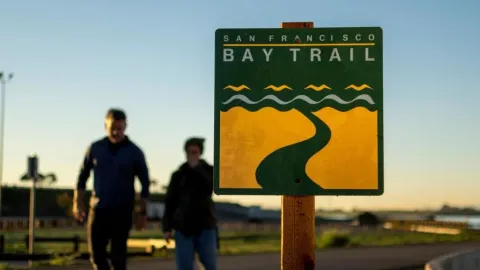
In June 2016, Bay Area voters approved a regional parcel tax measure to fund wetlands restoration for the San Francisco Bay. Measure AA, or the San Francisco Bay Clean Water, Pollution Prevention and Habitat Restoration Measure, was the first regional parcel tax measure in California’s history, and passed with 70 percent voter approval throughout the nine-county Bay area. The parcel tax is expected to generate $500 million in funds over the next 20 years for multi-benefit projects that restore habitat, protect shorelines from flooding, provide public access and recreation opportunities, and similar amenities.
The San Francisco Estuary Partnership, a program of ABAG, provides staff support to the San Francisco Bay Restoration Authority, the regional agency created to allocate Measure AA funds. The Estuary Partnership along with staff from the State Coastal Conservancy supports the Restoration Authority’s charge to select and manage projects, and provides day-to-day administration of the Authority Board and associated committees, including the forthcoming establishment of a Citizens Oversight Committee.
Currently, the Estuary Partnership is assisting the Restoration Authority with selection of the first round of projects to receive funds; the selected projects will be announced in April. Applications for the Independent Citizens Oversight Committee are due March 30; interested members of the public are invited to apply.
Why is this groundbreaking regional parcel tax so important for the Bay? Historically, over 200,000 acres of wetlands ringed the edges of the San Francisco Bay. These wetlands provided more than vital habitat to the abundant fish, waterfowl and other wildlife of the area: they also served as sponges for high tides and flooding, dissipating the energy of the tide as it approached the land, and helping to filter contaminants. With urban development, however, the Bay lost 90 percent of its wetlands, becoming one-third smaller in the course of a century. A 1999 study called for restoration of 100,000 acres around the Bay in order to restore the vital functions of the estuary and protect against future sea level rise, at an estimated cost of $1.5 billion in 1999 dollars. With the constant threat of federal funding cuts, these local funds enable substantial progress toward the goal of a more resilient Bay.



Submit your comment
In order to receive a reply to your comment, please provide an email address.